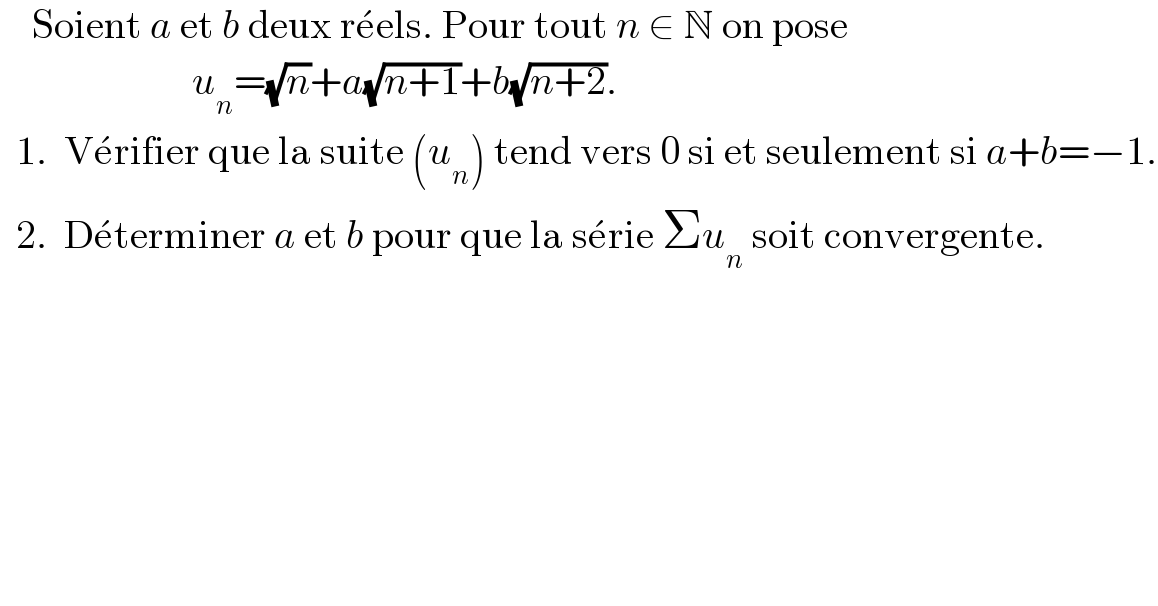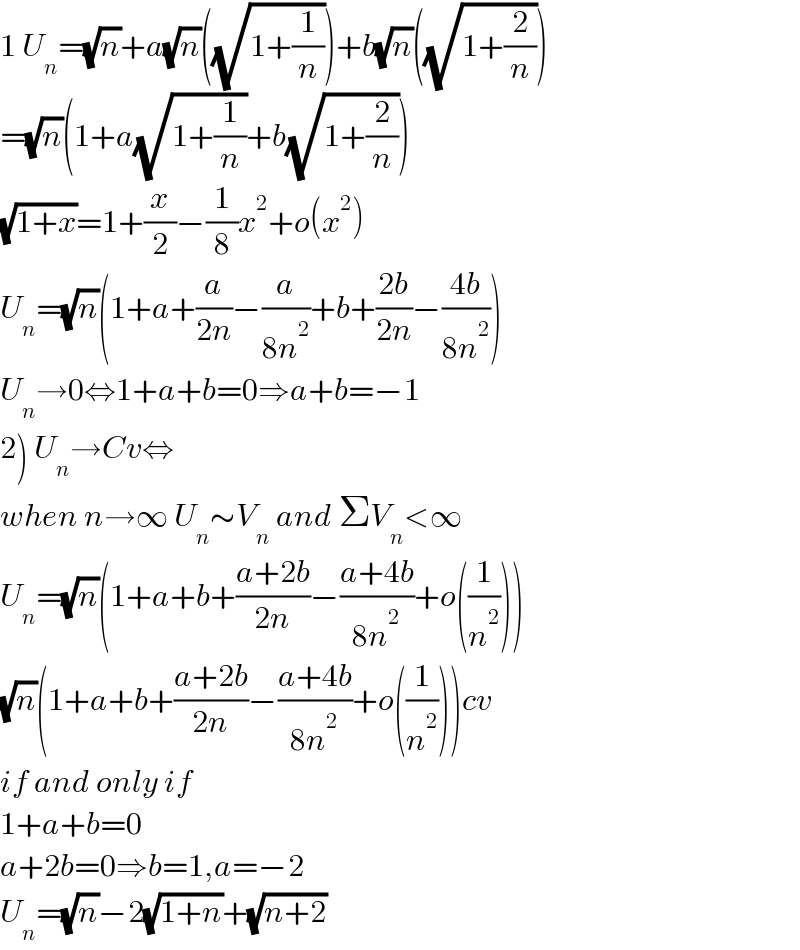
Question and Answers Forum
Question Number 173795 by Ar Brandon last updated on 18/Jul/22

Commented by Ar Brandon last updated on 18/Jul/22

Answered by mindispower last updated on 18/Jul/22

Commented by Ar Brandon last updated on 18/Jul/22
Merci
Commented by Tawa11 last updated on 19/Jul/22

